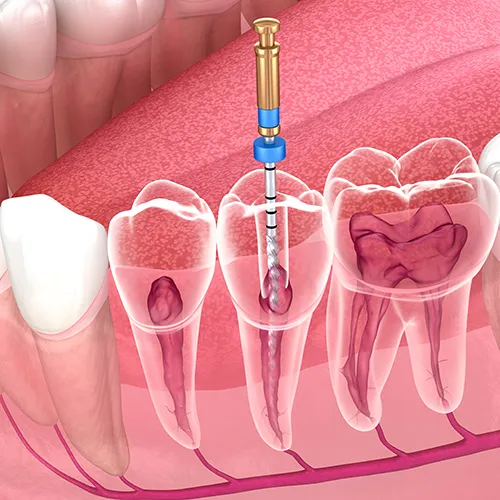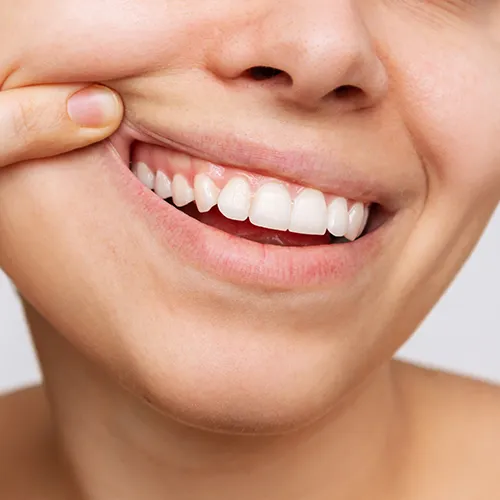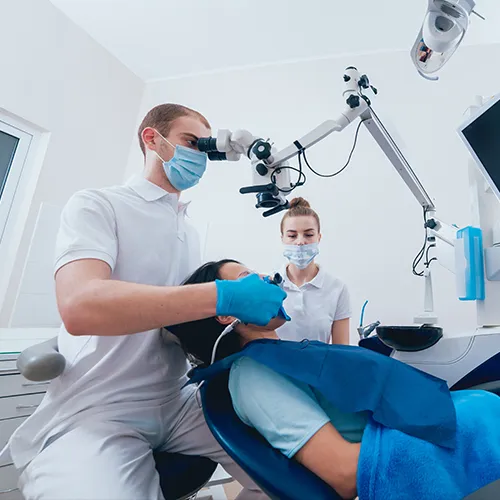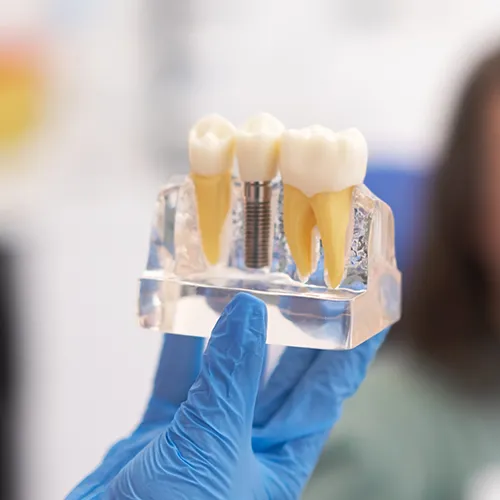Emergency Dentistry
Understanding And Treating Gingivitis: A Comprehensive Guide
Gingivitis, a common oral health issue, often goes unnoticed until it becomes a significant problem. In this comprehensive guide, we’ll delve into the causes, symptoms, and effective treatments for gingivitis. Our goal is to help you understand this condition and take proactive steps to maintain your oral health.
Does Gingivitis Go Away?
Gingivitis, recognized as the initial stage of gum disease, often manifests as swollen, red, and occasionally bleeding gums. It primarily results from plaque buildup, a bacterial film that adheres to teeth. Understanding and addressing this condition is crucial in oral health care.
The Nature of Plaque and Its Effects
Plaque, a soft, bacteria-laden film, continuously forms on our teeth. It thrives on the sugars in our diet, producing acids that irritate and inflame the gums, leading to gingivitis. Without proper removal, plaque hardens into tartar, exacerbating gum irritation and potentially leading to more severe gum diseases.
Reversing Gingivitis
Fortunately, gingivitis is reversible. Effective plaque removal is key, achievable through consistent oral hygiene practices. Brushing twice daily with fluoride toothpaste, daily flossing, and using an antibacterial mouthwash are fundamental steps in this process. These actions help eliminate plaque and reduce gum inflammation.
The Importance of Professional Dental Care
Professional dental care is equally crucial in the treatment and reversal of gingivitis. Regular dental check-ups enable early detection of the condition, often before you experience discomfort or bleeding. During these visits, professional cleaning removes tartar, which is not possible through at-home brushing. Your dentist can also provide tailored advice and treatment plans, including recommendations for specific oral care products and techniques.
Preventing Progression to More Serious Conditions
Untreated gingivitis can escalate to periodontitis, a more severe gum disease that can damage the tissues and bones supporting teeth, leading to tooth loss. Prompt attention to gingivitis is not only about alleviating symptoms but also about preventing these serious, long-term oral health complications. In summary, gingivitis is a common yet manageable oral health condition. Maintaining diligent oral hygiene and seeking regular professional dental care are fundamental in reversing gingivitis. If signs of gingivitis appear, such as swollen or bleeding gums, consulting with a dentist promptly is essential for effective treatment and maintaining overall oral health.
How Do You Fix Gingivitis?
Effective treatment of gingivitis combines diligent home oral care with necessary professional dental treatments. Here’s a closer look at these essential methods:
Home Oral Hygiene Practices
**Brushing and Flossing: **The foundation of gingivitis treatment lies in regular and correct brushing and flossing. Brush twice a day with fluoride toothpaste and a soft-bristled toothbrush. Ensure you’re reaching all tooth surfaces and the gum line. Flossing once daily is equally important to remove plaque and food particles from between teeth, areas where a brush can’t reach.
**Mouthwash: **Incorporating an antibacterial mouthwash into your daily routine can significantly aid in reducing plaque and gingivitis. It helps in reaching areas that brushing and flossing might miss, thus improving overall oral hygiene and reducing gum inflammation.
Professional Dental Treatments
**Scaling and Root Planing: **This is a deep-cleaning procedure done by dental professionals. It involves removing plaque and tartar from the tooth surface and beneath the gums. Scaling cleans away these deposits, while root planing smoothens the tooth root to help gums reattach and reduce the likelihood of future plaque buildup.
Regular Dental Check-ups: Routine visits to the dentist are crucial for early detection and treatment of gingivitis. Regular cleanings by a dental professional are necessary to remove tartar buildup and keep your gums healthy. During these visits, dentists can also provide personalized advice and care plans based on your oral health status.
Treating gingivitis effectively requires a combination of good oral hygiene at home and professional dental care. Early intervention and consistent care are key to reversing gingivitis and maintaining healthy gums. If you’re experiencing signs of gingivitis, don’t hesitate to consult with your dentist for a tailored treatment plan.
What is the best treatment for Gingivitis?
Identifying the best treatment for gingivitis involves considering the individual’s specific oral health situation. Generally, a dual approach combining professional dental care and thorough at-home oral hygiene practices proves most effective in combating gingivitis.
Tailoring Treatment to Individual Needs Each case of gingivitis is unique, and so should be its treatment. For some, routine dental cleanings coupled with improved brushing and flossing techniques may suffice. Others might require more intensive treatments, especially if the gingivitis is more advanced or if there are other complicating factors, such as underlying health conditions or a history of dental issues.
Professional Dental Treatments Professional dental treatments are indispensable in managing gingivitis. These treatments are not just about addressing the current inflammation but also about preventing its recurrence. Regular cleanings by a dental professional help remove plaque and tartar buildup, which are not always controllable by regular brushing and flossing alone.
Advanced Procedures for Severe Cases In more advanced cases of gingivitis, where the usual treatments may not be sufficient, dental professionals might recommend more specialized procedures.
- **Laser Therapy: **This modern treatment uses laser technology to precisely target and remove inflamed gum tissue. It also helps in reducing the levels of harmful bacteria in the gums. The precision of laser therapy minimizes damage to surrounding healthy tissue and promotes quicker healing.
- Medication: For cases where bacteria are particularly stubborn or the body’s response to infection is intense, dentists may prescribe medications. These can include antibiotic gels applied directly to the gum pockets, oral antibiotics for more systemic treatment, or medicated mouthwashes designed to reduce bacterial growth and inflammation in the mouth.
Home Care as a Pillar of Treatment While professional treatments are vital, the role of rigorous home care cannot be overstated. Consistent and proper brushing, flossing, and the use of mouthwash form the backbone of gingivitis prevention and treatment. These practices not only help in managing the current condition but also prevent future occurrences of gingivitis.
The best treatment for gingivitis is a personalized one, blending professional dental interventions with diligent home oral care. For those with advanced gingivitis, incorporating laser therapy or medications might be necessary. It’s crucial to work closely with your dental professional to develop a treatment plan that addresses your specific needs and to follow through with meticulous home care to ensure the health and longevity of your gums.
Conclusion
Gingivitis, if left untreated, can lead to serious dental problems. However, with proper care and regular dental visits, it’s entirely preventable and reversible. If you’re experiencing any symptoms of gingivitis, we encourage you to schedule a consultation at our clinic. Our team of dental professionals is committed to helping you achieve and maintain optimal oral health. Concerned about your gum health? Don’t wait for the symptoms to worsen. Schedule a consultation with our expert dental team today and take the first step towards a healthier, happier smile!





















